High School Students Win Top Science Fair Awards with AIF’s SEM Imaging
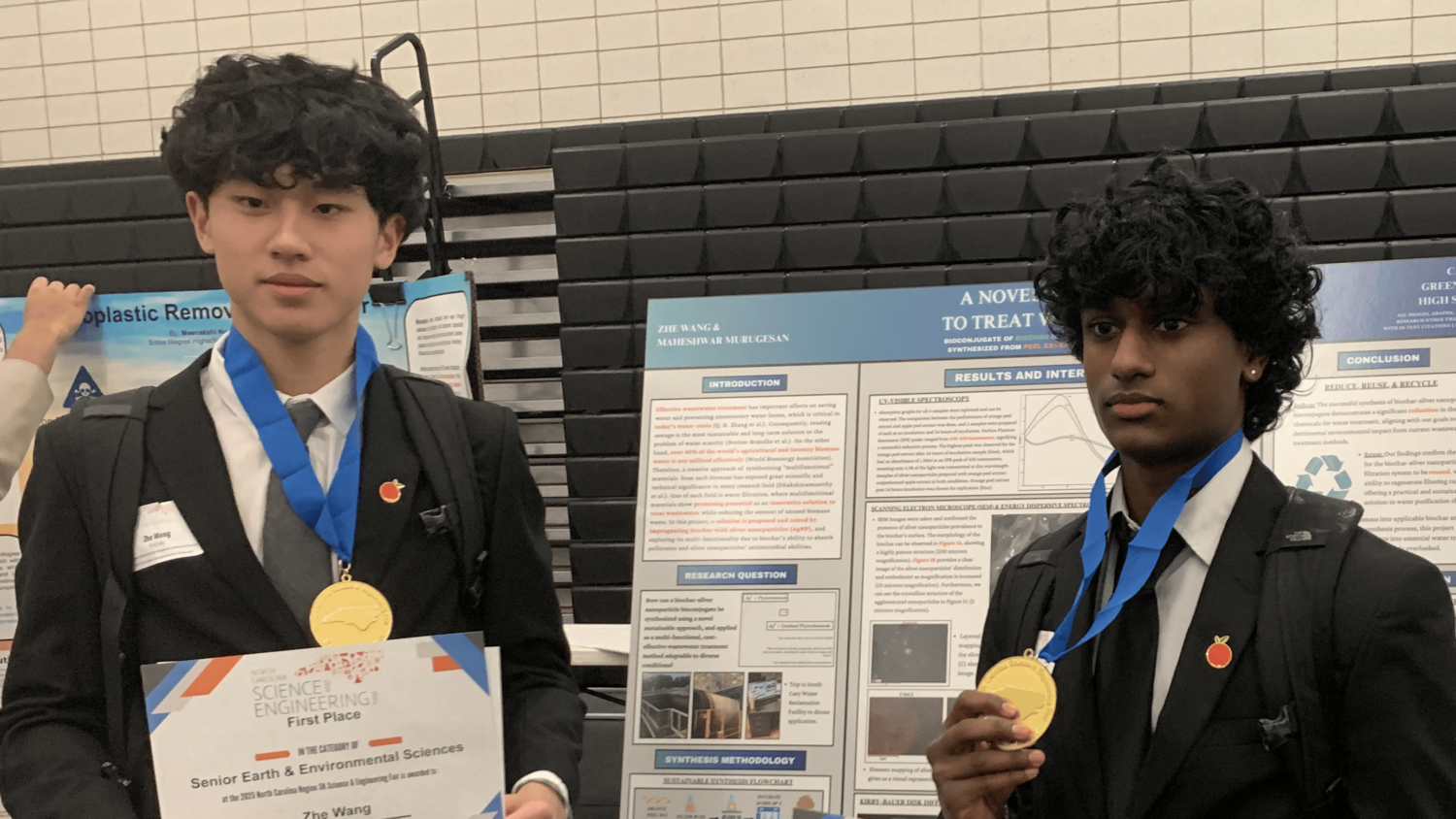
The AIF is proud to support the next generation of scientists! Two high school students, Maheshwar (Mahesh) Murugesan and Zhe (David) Wang, recently won first place in the Environmental Science category at the North Carolina Regional Science and Engineering Fair. In addition, they were honored with the NC One Water Award, recognizing their outstanding research in water-related environmental science.
Their project utilized scanning electron microscopy (SEM) imaging provided by AIF, which played a key role in their analysis and findings. By leveraging high-resolution imaging, they were able to enhance the quality and impact of their research.
In a message to Chuck Mooney, AIF’s SEM lab manager, Mahesh and David expressed their gratitude:
“Your generosity in providing the SEM images played a significant role in our project’s success. We are truly grateful for your support, as it made a real difference in the quality and impact of our work.”
We are thrilled to see AIF resources contributing to such meaningful student research and look forward to continuing to support young scientists in their academic journeys.
Congratulations to Mahesh and David on this incredible achievement! 🎉
An Interview with Mahesh and David
Can you introduce yourselves and tell us a little about your background and interests in science?
Hi, I’m Maheshwar Murugesan, a Tamil senior from Green Level High School, Cary, North Carolina. I’m an entrepreneur driven by a passion for sustainability. My first business, Caryeleccycles, transforms standard bicycles into electric bikes, making e-bike technology more affordable and accessible. I also host the podcast MM Interviews, to date I’ve reached 80,000+ net views/listeners, where I invite prominent guest speakers to offer career-focused advice tailored to teens.

One of my proudest moments was interviewing the President of the University of the Ozarks during a summer program at Cornell University. I’m committed to giving back through my nonprofit, Visionpath Corp, which funds eye treatments for low-income patients and has raised nearly $12,000 by organizing athletic tournaments. To date we have helped 3 patients receive the funds and lenses for their keratoconus treatment, helping them see properly. To boost financial literacy among teenagers, I wrote The Wealthy Teen, a 300-page guide providing practical financial advice to help teens plan for a successful future. Through @maheshbusiness07 I share my journey on social media, building a brand that reflects my dedication and values reaching around 300,000 individuals. Driven by my passion for STEM, I am developing a patent-pending biochar nanoparticle filter for wastewater treatment, with the goal of advancing environmental sustainability. My efforts in this field have been further recognized through a publication in the National High School Journal of Science, where my paper, Comparative Analysis of Machine Learning Techniques and Physical-Chemical Approaches for Celiac Disease Diagnosis: Evaluating Predictive Performance and Feature Importance, has been featured. In addition to my academic pursuits, I’m a certified referee with the NCSRA and have officiated over 150 games, which allows me to stay connected to sports, a lifelong interest of mine. Outside of my professional and academic life, I’m deeply passionate about drumming, a hobby I’ve nurtured since I was six years old. My ultimate goal is to become a serial entrepreneur, dedicated to creating a legacy of innovation and impact, continually seeking new ways to contribute positively to my community and the world through God’s teachings.
Hi, my name is Zhe Wang, and I’m a current junior at Green Level High School. Some of my interests outside of school include coding, watching movies, and eating out with friends. Some of my background in STEM includes building a comprehensive wage management app that won me a finalist in the Congressional APP Challenge, synthesizing a biochar-silver nanoparticles conjugate for wastewater treatment, and expanding my knowledge in the MIT Beaver Works courses.
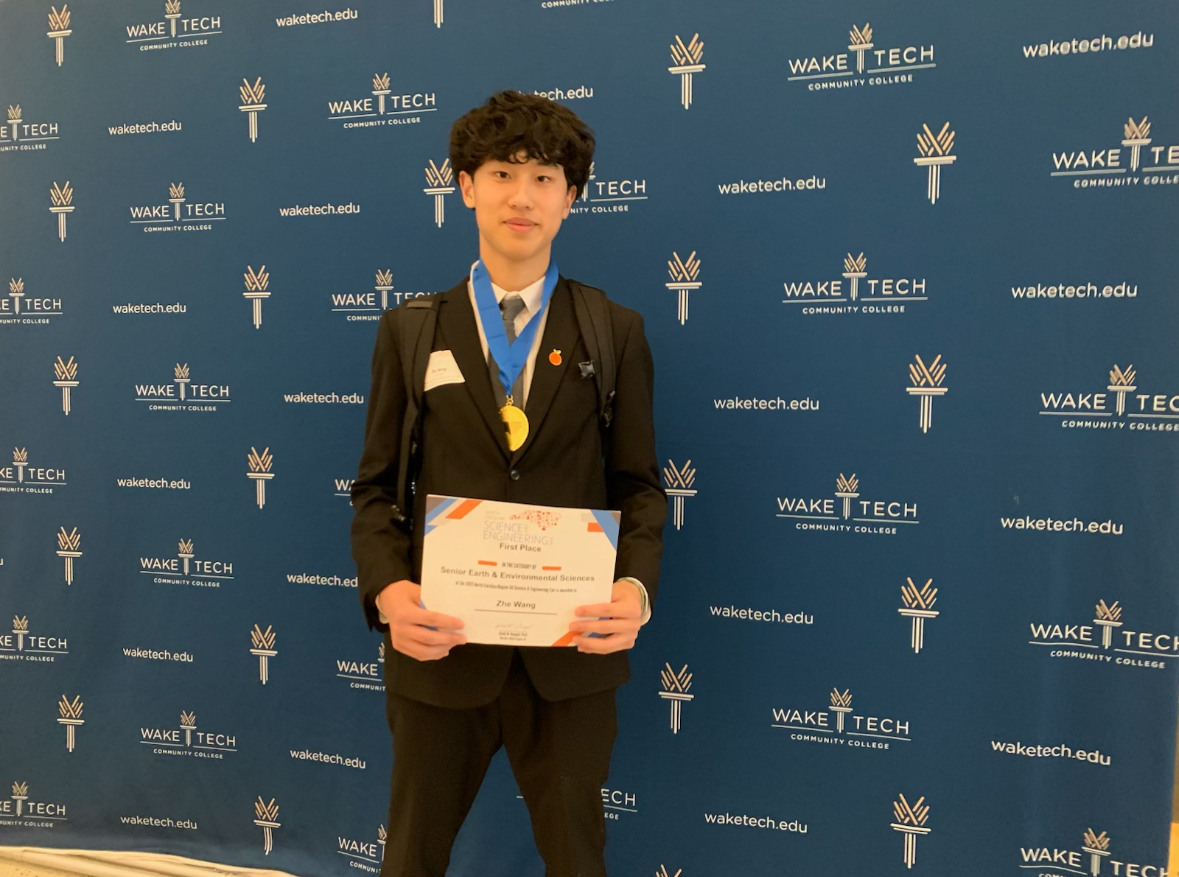
I’ve also taken STEM-oriented classes, like environmental science, chemistry, and calculus at Green Level. I hope to learn more about the science field and do something at the intersection of technology and entrepreneurship in the future.
What inspired you both to participate in the North Carolina Regional Science and Engineering Fair?
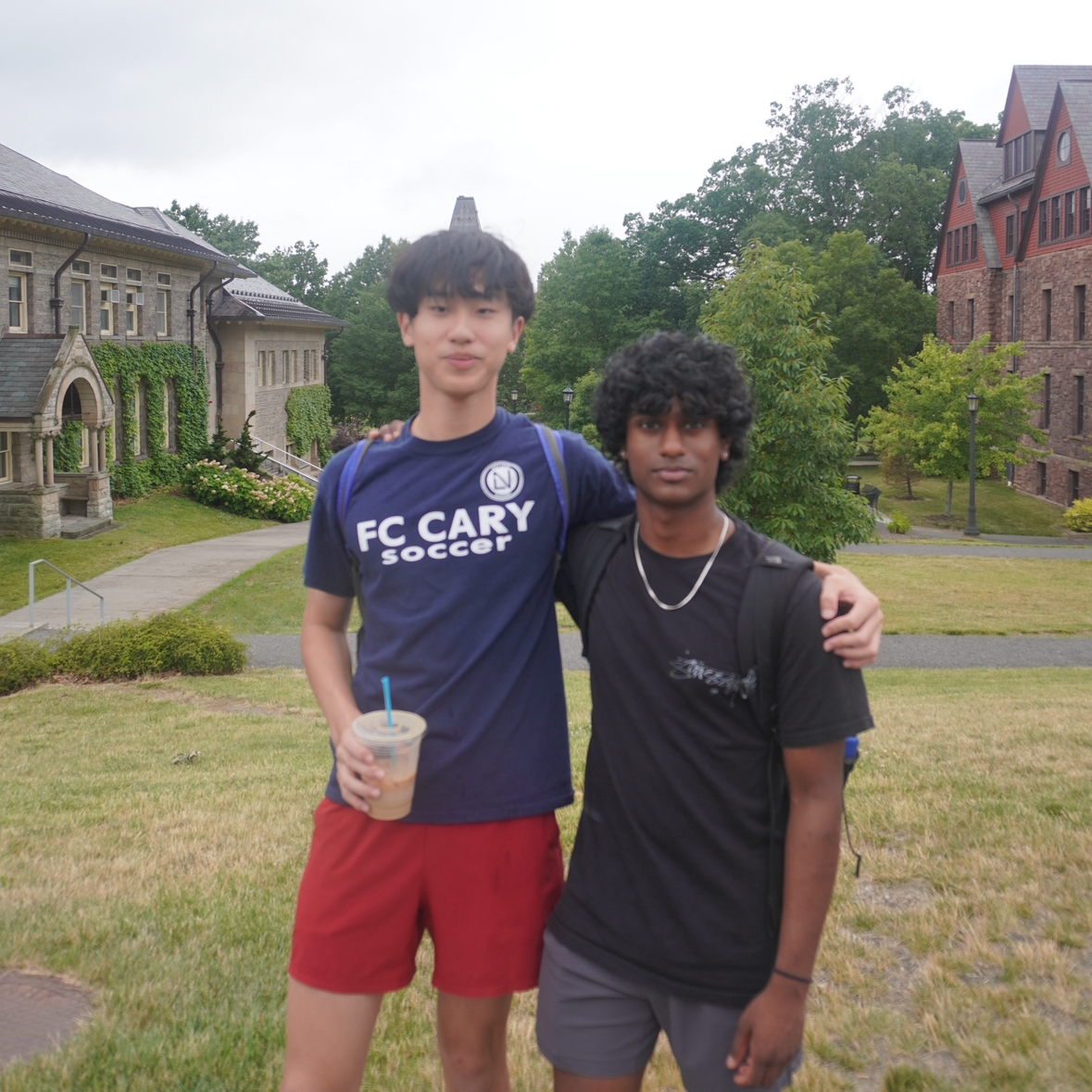
We have been working closely as partners for the last 2 years and we wanted to expand into stem. Hearing about the rigor and the competition involved in this field we wanted to see how far we could go even though it wasn’t our expertise. We created a project that was in our minds for a considerable amount of time and we brought it to life on this platform. We competed not only to try out STEM, but to converse with scientists to get valuable feedback on our project.
What was your project about, and what problem were you trying to solve?
Our project was focused on developing a novel biochar-silver nanoparticle composite filter to enhance the efficiency of wastewater treatment. The primary problem we aimed to address involved the inconsistent and inadequate filtering of heavy metals and bacteria from wastewater, especially prevalent in third-world countries. This situation often leads to high cancer rates and unsafe drinking water due to contamination from industrial leaks.
We explored using biochar for its porous structure and reusability, augmented with silver nanoparticles known for their antimicrobial properties. The goal was to create a sustainable and reusable filter capable of effectively removing both heavy metals and bacterial contaminants. Our long term vision with this project is to implement it and make it a government regulation for factories with adjacent villages.
How did you come up with the idea for your research?
We both originate from Asian countries where we’ve seen firsthand how bad wastewater treatment can get. Visiting our hometowns, especially industry-adjacent villages, instilled fear in us when we put ourselves in our natives’ shoes. We wanted to create a sustainable material that not only battles every form of wastewater contamination, but also utilizes wasted materials in our world. We used materials as simple as wasted wood chips to create biochar, orange peels to create extracts to create silver nanoparticles, and even reused plastics to create our filter.
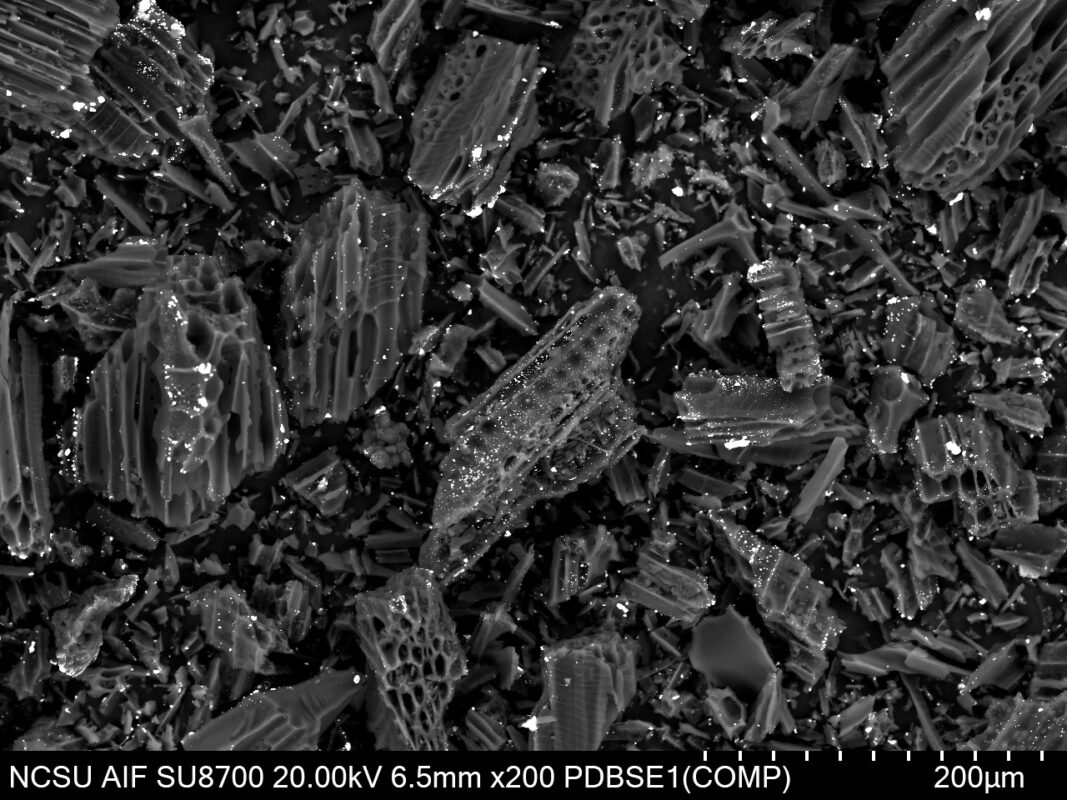
What methods did you use to conduct your study?
We began by synthesizing the biochar-silver nanoparticle composite using orange peel extract as a natural reducing agent, ensuring a sustainable and efficient formation process. To confirm the successful creation of silver nanoparticles, we analyzed the composite using UV-Vis spectroscopy, identifying characteristic absorbance peaks. We then conducted further structural analysis through Scanning Electron Microscopy (SEM) and Energy Dispersive Spectroscopy (EDS) to visualize the nanoparticles and assess their distribution on the biochar matrix.
Once we validated the composite’s structure, we tested its performance in real-world conditions. For bacterial filtration, we assessed its effectiveness against *Escherichia coli* and *Staphylococcus aureus*, measuring bacterial reduction levels to determine its antimicrobial properties. To evaluate its ability to remove heavy metals, we tested for an entire spectrum of contaminants, including lead and chromium, using both spiked samples and actual wastewater to ensure its applicability in practical scenarios.
Additionally, we examined its capacity for toxic dye absorption, further demonstrating its versatility in wastewater treatment. These comprehensive tests allowed us to refine the material and assess its potential for large-scale implementation.
How did SEM imaging contribute to your research and findings?
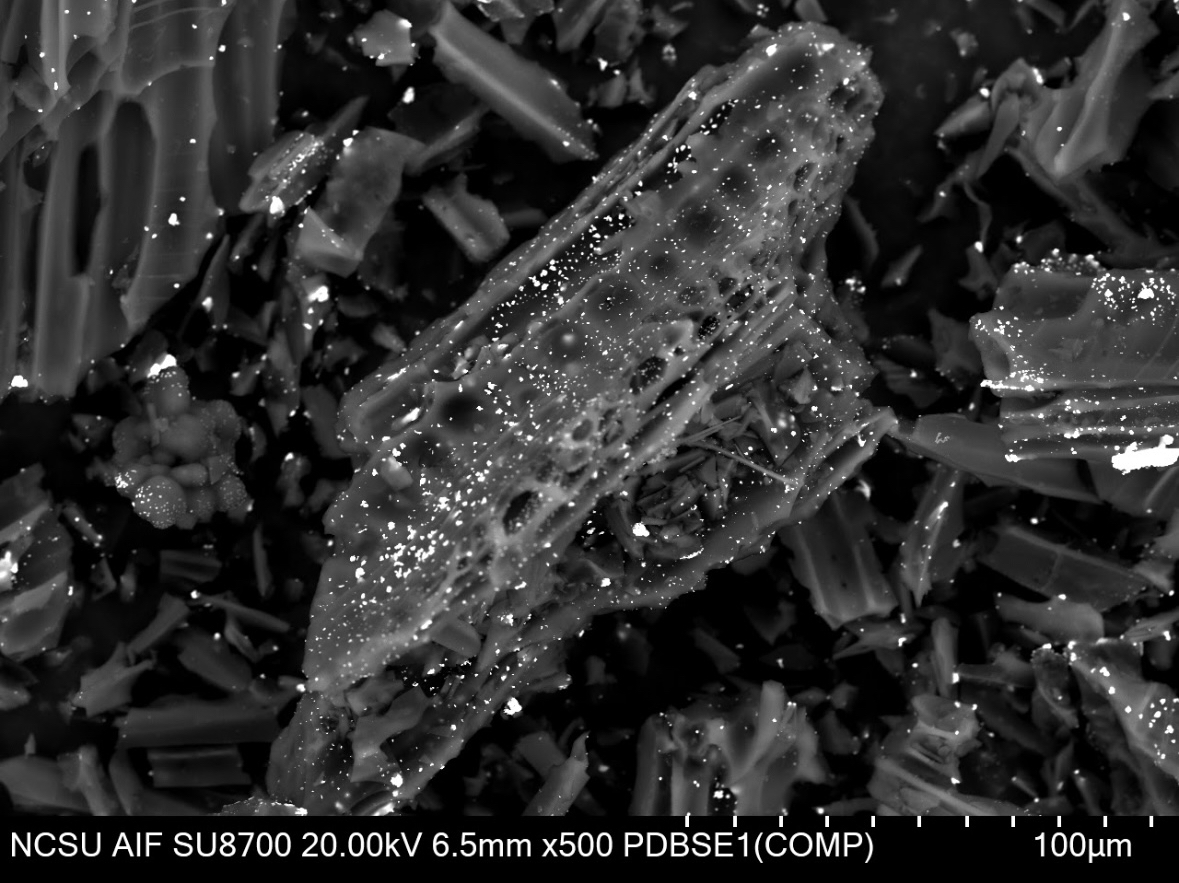
SEM imaging played a crucial role in our research by providing detailed visualization of the biochar-silver nanoparticle composite at the nanoscale. It allowed us to confirm the successful attachment and distribution of silver nanoparticles on the biochar matrix, ensuring uniform coverage for effective filtration. By analyzing the morphology and surface structure, we could assess the porosity of the biochar, which directly impacts its adsorption capacity for heavy metals and bacteria.
SEM helped us compare different synthesis methods by revealing variations in nanoparticle dispersion and clustering. This insight enabled us to refine our synthesis process, optimizing the composite’s structural integrity and enhancing its performance in wastewater treatment applications.
What did you learn from using advanced microscopy techniques?
Using advanced microscopy techniques such as SEM and EDS provided us with critical insights into the structural and elemental composition of our biochar-silver nanoparticle composite. SEM imaging allowed us to visualize the morphology, porosity, and dispersion of silver nanoparticles on the biochar surface, confirming their successful attachment and uniform distribution. This was essential in understanding how the composite’s structure influenced its adsorption capacity for contaminants.
Additionally, EDS enabled us to perform elemental analysis, verifying the presence of silver and ensuring that the nanoparticles were effectively impregnated onto the biochar matrix. These techniques also helped us compare different synthesis methods, revealing variations in nanoparticle clustering and surface characteristics. Overall, advanced microscopy allowed us to refine our material, optimize its synthesis, and improve its efficiency in wastewater treatment applications.
Were there any challenges in the imaging or analysis process?
One of the main challenges in the imaging and analysis process was selecting the right SEM images that accurately represented the biochar-silver nanoparticle composite. Given the varying dispersion of silver nanoparticles across different samples, some images showed uneven clustering, while others displayed more uniform distribution. Identifying the most representative images required careful analysis and comparison across multiple regions of the sample.
Despite this challenge, the overall imaging process was seamless. SEM provided high-resolution visuals that allowed us to confirm the successful attachment of silver nanoparticles, while EDS effectively verified their elemental composition. The combination of these techniques ensured that we had a comprehensive understanding of our material’s structure, enabling us to refine its synthesis and optimize its performance for wastewater treatment applications.
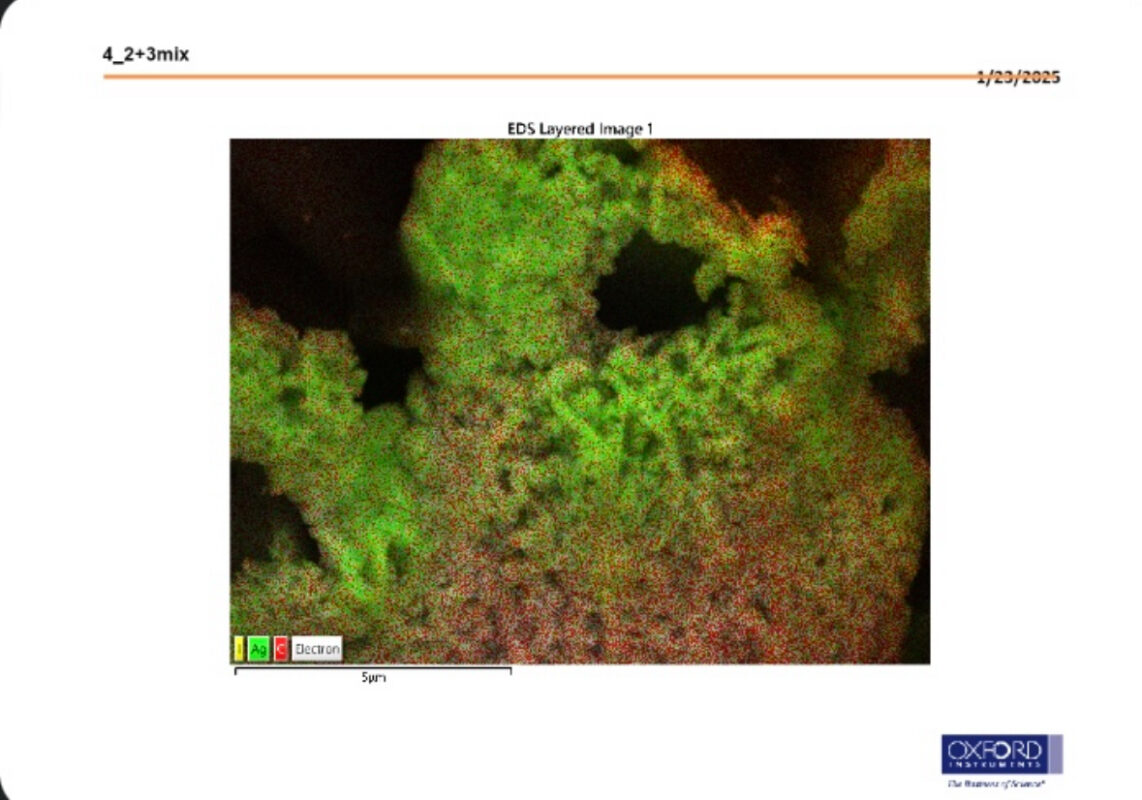
How has this experience influenced your interest in science and research? Do you have any plans to continue or expand your project?
This experience motivated us even further. We were a little nervous before the competition since we had never done anything like this before (we were more specialized in finance and economics), but after competing, we realized that STEM is driven by work ethic and passion, not just talent or connections.
This shift in perspective reinforced our confidence in tackling scientific challenges and showed us that dedication and persistence can lead to meaningful innovation, regardless of background.
We plan to incorporate the 3D printing process, integrate it into smaller wastewater systems, and eventually turn it into a business that we can scale internationally by contracting with NGOs and governments. We have many ambitious goals for this project, and regardless of the results at competitions, we are committed to pushing forward and making a real impact.
STEM is a field that anyone can break into, regardless of expertise or resources. You don’t need a special lab at your school to create a project. If you don’t have connections in the STEM field, always reach out to professionals—that’s exactly how we got in touch with AIF! We cold-emailed everyone we possibly could to convey our needs and our project, and we are extremely grateful that we were able to get the help we needed.
Is there anyone you’d like to thank for supporting your research journey?
Of course, we would like to thank AIF! The wonderful staff has helped us receive imaging support even though we are only in high school, and their communication has been outstanding. We would also like to give a special thanks to NC STEM Academy, especially Barathi Uncle and Nishanthi Aunty. Through their resources in the lab, we were able to bring this project to life, and we are forever grateful for their support. Furthermore I would like to thank my dad who tirelessly worked to find us connections and anyone that would help. Only through my dad did we receive crucial UV VIS data!
If your research project had a theme song, what would it be and why?
“Leaving Tonight” by The Neighborhood.
This song brings a wave of nostalgia, reminding us of the setbacks we faced as freshmen and the victories we achieved two years later.

- Categories: